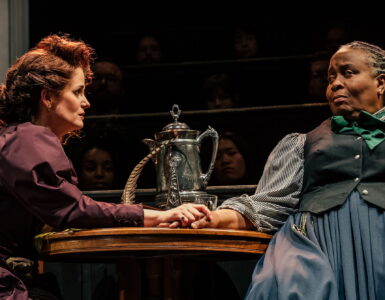
Spring (Jeanne Demarsy) by Édouard Manet, acquired at auction by the J. Paul Getty Museum on November 5, has gone on public view. The gorgeous painting is hanging in the West Pavilion with the Museum’s collections of paintings by Degas, Monet, van Gogh and other nineteenth-century masters.
“Spring was the last of Manet’s Salon paintings still in private hands, and universally recognized as one of his masterpieces,” said Timothy Potts, director of the J. Paul Getty Museum. “It is a work of extraordinary quality and beauty, epitomizing Manet’s influential conception of modernity, and executed at the height of his artistic powers—but also, tragically, when he was already afflicted with the illness that would soon lead to his early death. Although he did not consider himself an Impressionist, Manet was intimately associated with that circle of artists. I have no doubt that this spectacular addition to our Impressionist/Post-Impressionist gallery will soon become one of the iconic images in the Getty’s collection, representing the highest achievement of late nineteenth-century French painting. Together with our other Manet paintings, watercolor and recently-acquired pastel, Spring also makes the Getty a must-visit destination for anyone with a serious interest in this artist’s remarkable achievement.”
Spring (Jeanne Demarsy) is a portrait of Parisian actress Jeanne Demarsy (1865-1937) as the embodiment of spring. Manet intended it as the first of a series of the four seasons representing fashionable Parisian women. However, he lived long enough only to complete two of the series: Spring and Autumn (Musée des Beaux-Arts, Nancy).
Spring was exhibited in the 1882 Paris Salon along with Manet’s celebrated masterwork A Bar at the Folies-Bergère (Courtauld Gallery, London). Spring was perhaps the most unalloyed success of Manet’s long and notorious Salon career. Critics found Jeanne utterly charming and exquisite—a highlight of Manet’s career, in which he took great pride. Having been in the collection of the same family for more than a century, the 29-by-20-inch-painting is in exceptionally fine condition.
The newly acquired Manet joins the Museum’s notable collection of works by the artist, which includes two paintings: the early Portrait of Madame Brunet (ca. 1861-63) and the The Rue Mosnier with Flags (1878), as well as the watercolor Bullfight (1865) and the pastel Portrait of Julien de la Rochenoire (1882).
The J. Paul Getty Trust is an international cultural and philanthropic institution devoted to the visual arts that includes the J. Paul Getty Museum, the Getty Research Institute, the Getty Conservation Institute, and the Getty Foundation. The J. Paul Getty Trust and Getty programs serve a varied audience from two locations: the Getty Center in Los Angeles and the Getty Villa in Malibu.
The J. Paul Getty Museum collects in seven distinct areas, including Greek and Roman antiquities, European paintings, drawings, manuscripts, sculpture and decorative arts, and photographs gathered internationally. The Museum’s mission is to make the collection meaningful and attractive to a broad audience by presenting and interpreting the works of art through educational programs, special exhibitions, publications, conservation, and research.
Visiting the Getty Center:
The Getty Center is open Tuesday through Friday and Sunday from 10 a.m. to 5:30 p.m., and Saturday from 10 a.m. to 9 p.m. It is closed Monday and most major holidays, open on July 4. Admission to the Getty Center is always free. Parking is $15 per car, but reduced to $10 after 5 p.m. on Saturdays and for evening events throughout the week. No reservation is required for parking or general admission. Reservations are required for event seating and groups of 15 or more. Please call (310) 440-7300 (English or Spanish) for reservations and information. The TTY line for callers who are deaf or hearing impaired is (310) 440-7305. The Getty Center is at 1200 Getty Center Drive, Los Angeles, California.
Additional information is available here.
Sign up for e-Getty at www.getty.edu/subscribe to receive free monthly highlights of events at the Getty Center and the Getty Villa via e-mail, or visit www.getty.edu for a complete calendar of public programs.






